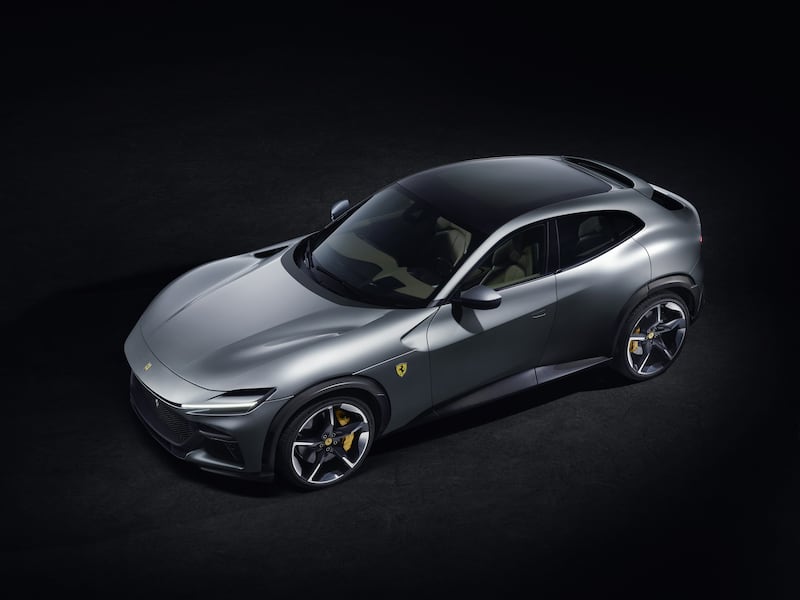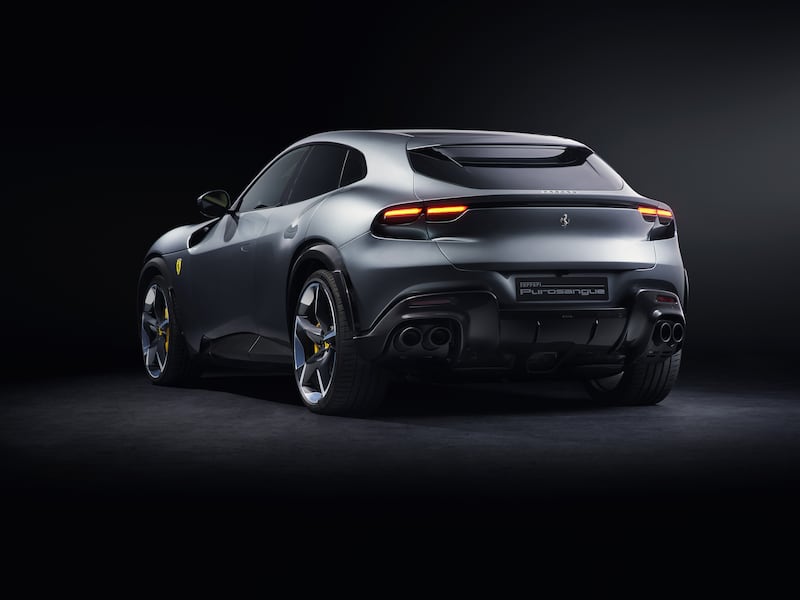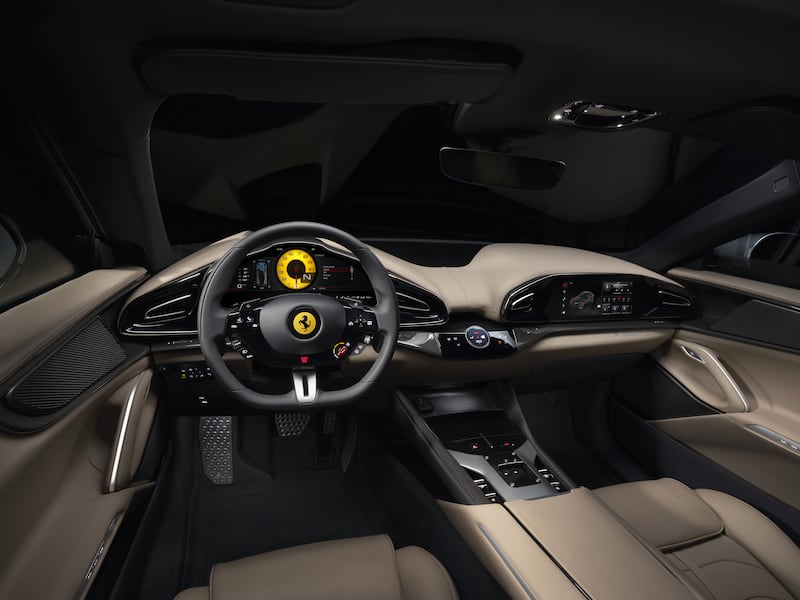You will see a lot of headlines proclaiming that the new Ferrari Purosangue is the brand’s first four-door “family” car. This is incorrect. There have been a handful of independent coach-built four-door Ferraris that have been previously made, including a 400i coupe converted by Robert Jankel, but Ferrari has semi-officially dabbled in practical vehicles in the past.
First off, in 1980, Ferrari’s official design house, Pininfarina, created the four-door Ferrari Pinin saloon, based on the two-door 400 GT. Only one was made, but Enzo Ferrari himself was serious, for a time, about putting the car into production. More recently, there was the incredibly elegant 456GT Venice shooting brake, also created by Pininfarina with Ferrari blessing, of which seven were built and almost all sold to the royal family of Brunei.
Sadly, given just how gorgeous the Venice was, the current trend is not for fast estates, it’s for fast SUVs, and given the huge numbers being added to the balance sheets of the likes of Porsche by the Cayenne and the Macan, it was almost inevitable that Ferrari would eventually have to capitulate and make a taller, more practical model.
There’s little point in crying into your Ferrari-branded teddy bear about it, nor claiming that old man Enzo would have hated it. He wouldn’t – he’d have utterly loved the profit margin and would have channelled all that extra cash into his beloved racing Scuderia.
READ MORE
The Purosangue – which translates as “pure blood”, and which Ferrari has been criticised for using because of its racial connotations, although the company insists that the correct translation is “thoroughbred’ – is a tall-ish front-engined SUV with four seats and rear-hinged rear doors. Ferrari doesn’t actually call it an SUV, saying that the Purosangue has “a completely different layout and innovative proportions compared to modern GT archetypes, so-called crossovers and SUVs.” We like the use of “so-called” there – it has the pomp and hauter that Enzo would have expressed.
To help the Purosangue dodge any criticism from sports car purists, Ferrari has decided to launch it with the latest version of the famed V12 engine, based on the unit used by the 812 Competizione. Displacing 6.5 litres, it develops a whopping 725hp, along with 716Nm of torque. The top speed is claimed at more than 310km/h, while the 0-100km/h time is a faintly ridiculous 3.3 seconds.


The Purosangue is, of course, four-wheel drive and it picks up some of the mechanical characteristics of the old Ferrari GTC4 Lusso – the brand’s most recent vaguely practical four-seat model. Like the Lusso, the Purosangue’s engine is set way back in the chassis, allowing Ferrari to claim that it’s a front-mid-engined car.
Instead of an extra prop-shaft coming from a central gearbox to power the front wheels, the Puroansgue uses a rear-mounted eight-speed “transaxle” paddle-shift gearbox to power the rear wheels, while at the front there is a separate power transfer unit that sends grunt to the front wheels. This allows the Purosangue to have slightly rear-biased weight distribution, as well as to be slightly lower-slung than the SUV norm.
While the V12 will be the headliner, it’s likely that Ferrari will also offer hybrid and possibly plug-in hybrid versions of the Purosangue, using the engines from the 296 GTB and the SF90 Stradale.
Compared to its closest rival, the Lamborghini Urus, the Puroansgue is slightly shorter overall, and its roofline is lower, some 80mm closer to the ground. Ferrari purists will also note that, unlike the Urus, the Puroangue doesn’t share a chassis and engine with a humble Volkswagen Touareg.
Inside, the dashboard gets a distinctive twin sweep shape, which partially echoes the design of the Roma coupe (and, to an extent, the 1958 Corvette) and which allows the front-seat passenger to have their own touchscreen. The rear seats are said to be very roomy and useable by adults, while the 487-litre boot is the largest ever offered by a Ferrari production car.

While that massive V12 will have equally massive CO2 emissions, Ferrari does claim that the Purosangue has sustainability in mind too: “Ferrari’s pursuit of luxury did not distract it for a second from its environmental and sustainability responsibilities. Sustainable materials have been used extensively throughout the Purosangue, opening up the possibility for new combinations.
“In fact, 85 per cent of the launch trim for the car was sustainably produced: the fabric roof lining is recycled polyester, the carpet is made from polyamide recycled from fishing nets retrieved from the oceans and newly formulated Alcantara, also derived from recycled polyester. In fact, the Purosangue is the very first car in the world to use this special version of Alcantara made of 68 per cent of post-consumer recycled polyester.”
Enrico Galliera, Ferrari’s marketing and commercial chief, said: “We believe it’s a game changer. It has the performance of a sports car with the comfort and versatility of a less extreme car. For us, the strategy was to develop a sports car in a different segment.”
Prices? If sir or madam has to ask, sir or madam cannot afford it. But if you must know, don’t bet on much change from €800,000 or so if you want to import one into Ireland.













